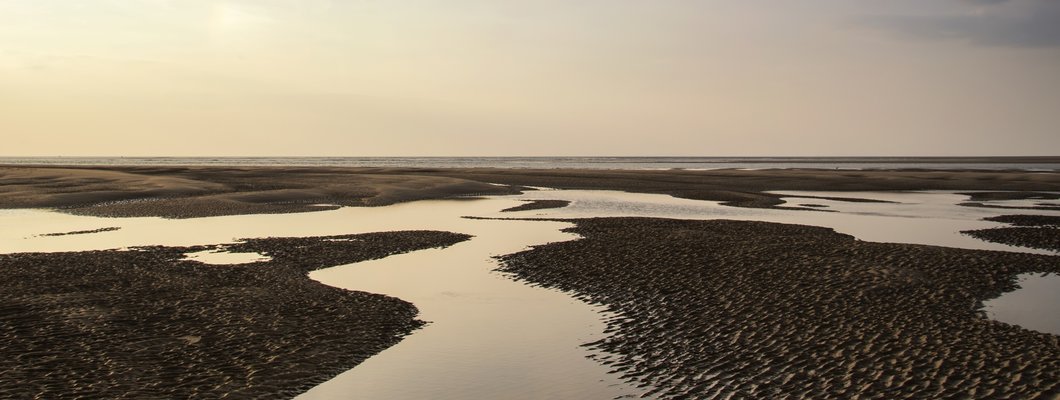
Not so long ago, only 8000 years to be precise, our ancestors could walk to England without getting their feet wet, instead of having to cross the North Sea like we do today.
The southern part of the area we now call the North Sea between the Netherlands, England, Belgium and Denmark, where the sea water is 40 to 50 metres deep, until 6000 years before our era, was just land: Doggerland. This now sunken land has known human inhabitants for at least a million years! It was a vast grassy and herb-rich steppe intermixed with pine and broad-leaved forests, covering more than 200 thousand square kilometres (by comparison, the Netherlands has 41 thousand square kilometres). During every Ice Age this area was dry. Mammoths, woolly rhinoceroses and aurochs, to name a few extinct species, lived here and so did our ancestors, including Neanderthals and, from about 14,000 years ago, modern man. Fist axes, hunting tools, but also bones of extinct mammals that fishermen sometimes find in their nets, are reminders of this vanished land. It was a rich area through which the great rivers Meuse, Rhine and Thames flowed into what is now known as Pas-de-Calais.
With the end of the last Ice Age and the onset of a warmer period around eleven thousand years ago resulting in melting ice caps, the sea level eventually began to rise by more than fifty metres, causing more and more of Doggerland to disappear. England became an island (a natural Brexit). At the site of today's Dogger Bank, a shallow area in the North Sea stretching 300 kilometres north-west of the Netherlands, a few islands remained, which eventually - aided by a tsunami - disappeared completely into the North Sea. This sandbank, which takes its name from the cod fishermen (doggers), is one of the remnants that still remind us of Doggerland and after which Doggerland was named. The many fossils and tools that are found along the coasts and in sand extractions and in the 'sand motor' slowly make it clear that there is an archaeological Eldorado in the North Sea, where finds still lie waiting that can tell us a lot about an era that ended not so long ago.
It is a fascinating idea that relatively recently Neanderthals and later modern humans lived and hunted in this area. Over the millennia, people and animals adapted to the changing situation and gradually withdrew. Climate adaptation is not new: our ancestors already experienced it extensively. The gradual climate change that we are now experiencing, with warm, dry or wet weather extremes and a sea level rise of 20 cm in the last hundred years, which we can still anticipate with all our knowledge and technology, is still small in comparison. On the other hand, it also shows that coastlines are not determined for eternity and can shift drastically. In that light, Amersfoort by the Sea is not a particularly wild scenario.
What Doggerland teaches us - apart from the problems and changes that we as humans are causing in the last century, which we need to rectify quickly - is that climate adaptation is of all times and that we are part of a natural system that is apparently stable for us, but which is subject to major changes in the longer term and to which humans and animals have had to adapt since prehistoric times. I wonder if Doggerland will ever appear again and who will live there. I suspect that the new ice age required for this will not happen for some time.
Sytze Keuning (keuning@bioclearearth.nl)
Published in the journal Bodem.